Create and Configure Your Webhook
To use Webhooks with Tensorlake, make sure you have created a project on Tensorlake Cloud.It is important to disable CSRF protection for the endpoint if the framework you use enables them by default.
1
Create a webhook
Go to the project that you want to create the webhook for, and click into the Webhooks tab.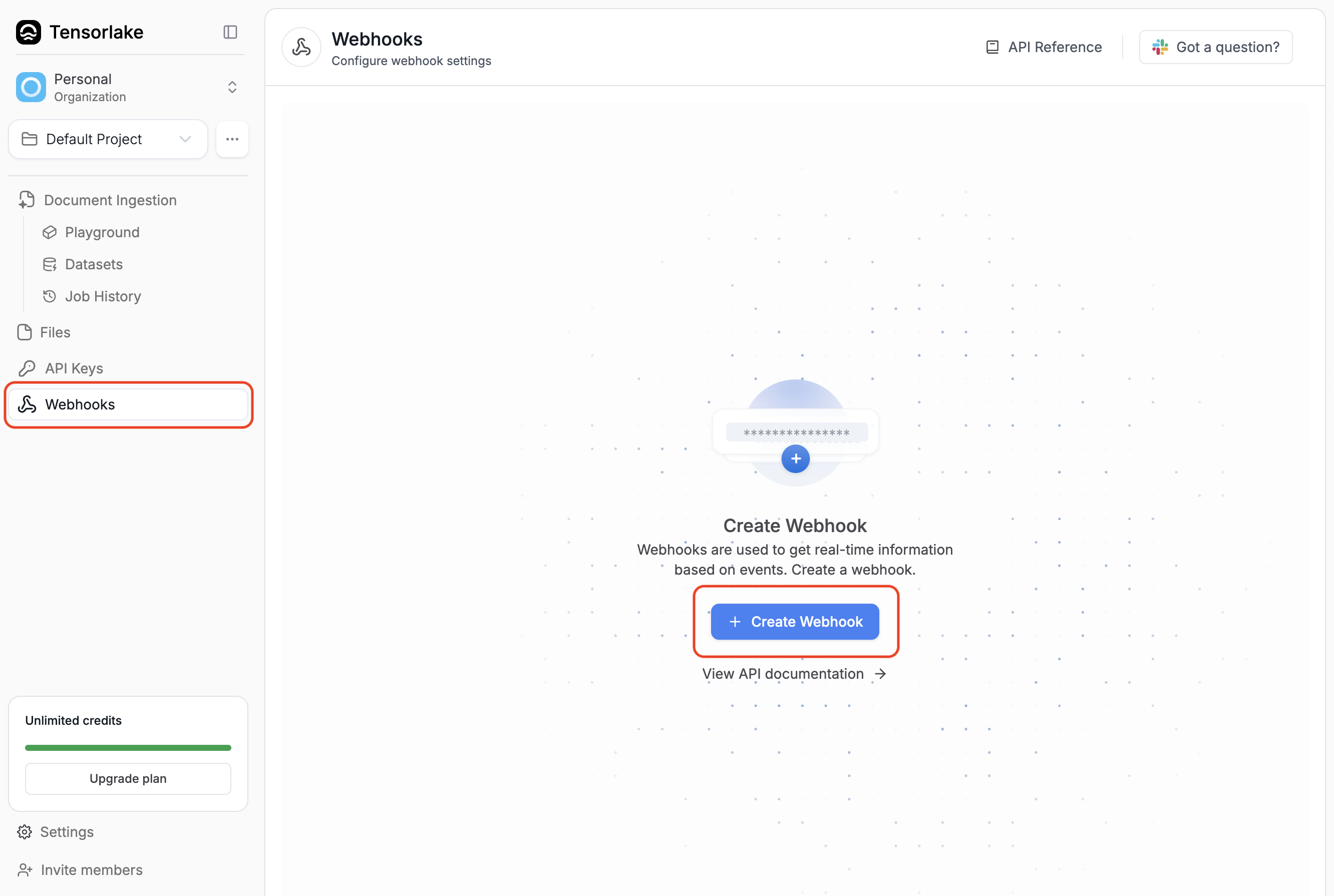

2
Set up your webhook
Give the webhook a name, and provide a URL that you control.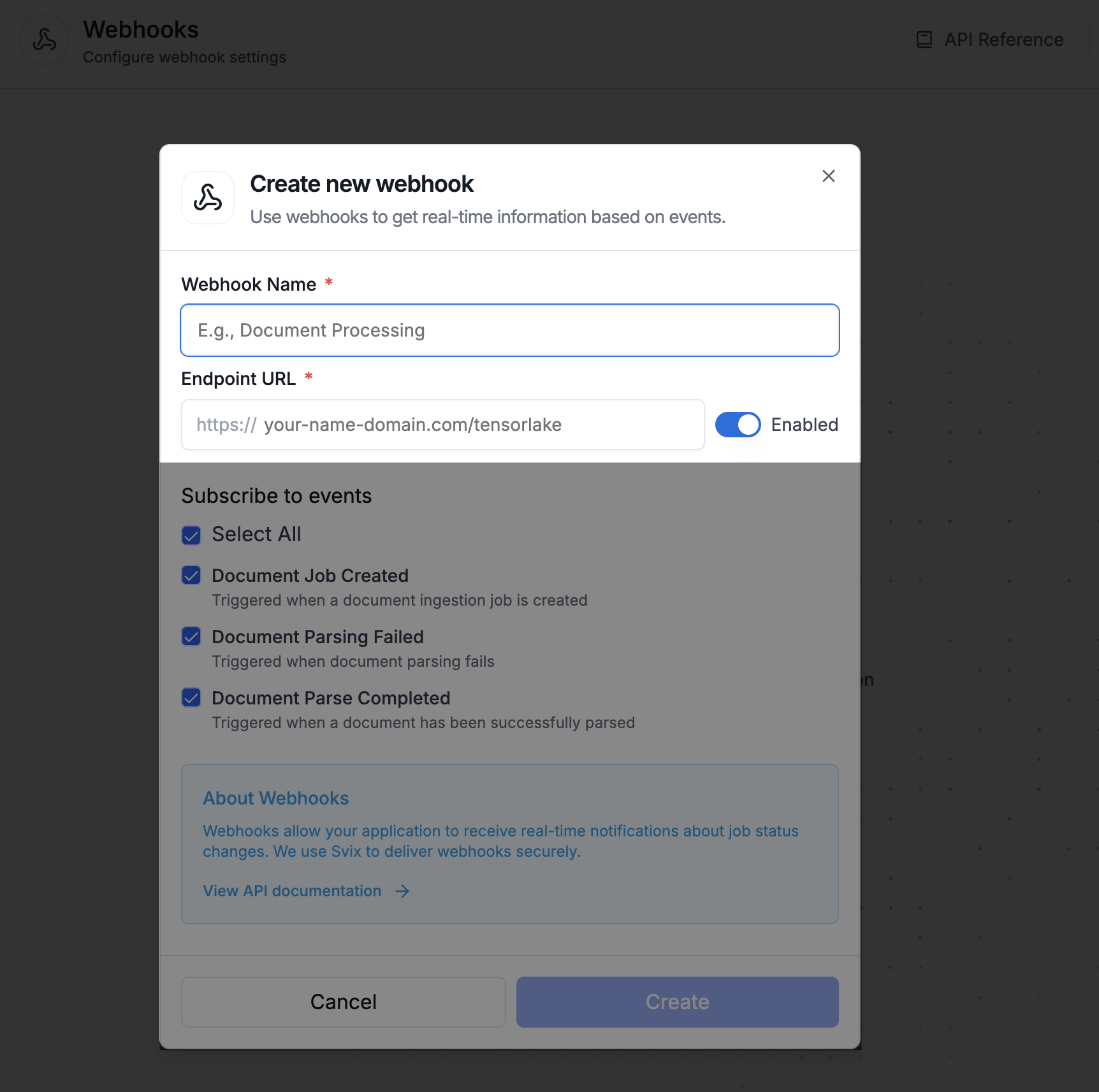

3
Configure access for your webhook
Configure your webhook by selecting the event types that you want to listen to.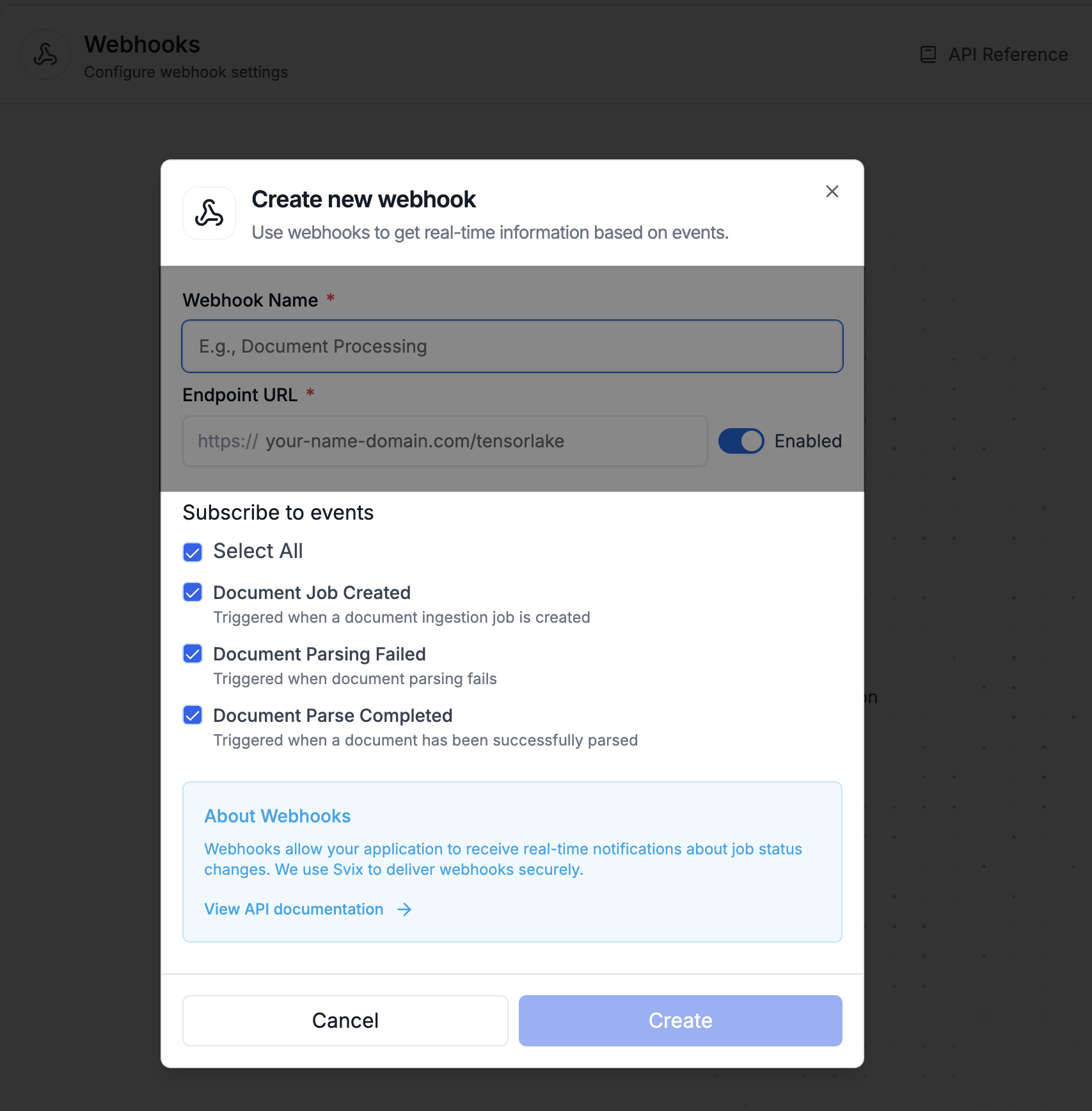

tensorlake.document_ingestion.job.created: Triggered when Tensorlake receives the request to parse a document and kicks off the parsing.tensorlake.document_ingestion.job.failed: Triggered when a parsing job fails.tensorlake.document_ingestion.job.completed: Triggered when a parsing job succeeds.
Understand the Webhook Payload
The payload of the webhook will depend on the event type received. The payload will be a JSON object with the following structure:- Job Created
- Job Failed
- Job Completed
Test Your Webhooks in Tensorlake Cloud
We have a UI to test webhooks. After creating a webhook, select on the event type you want to test.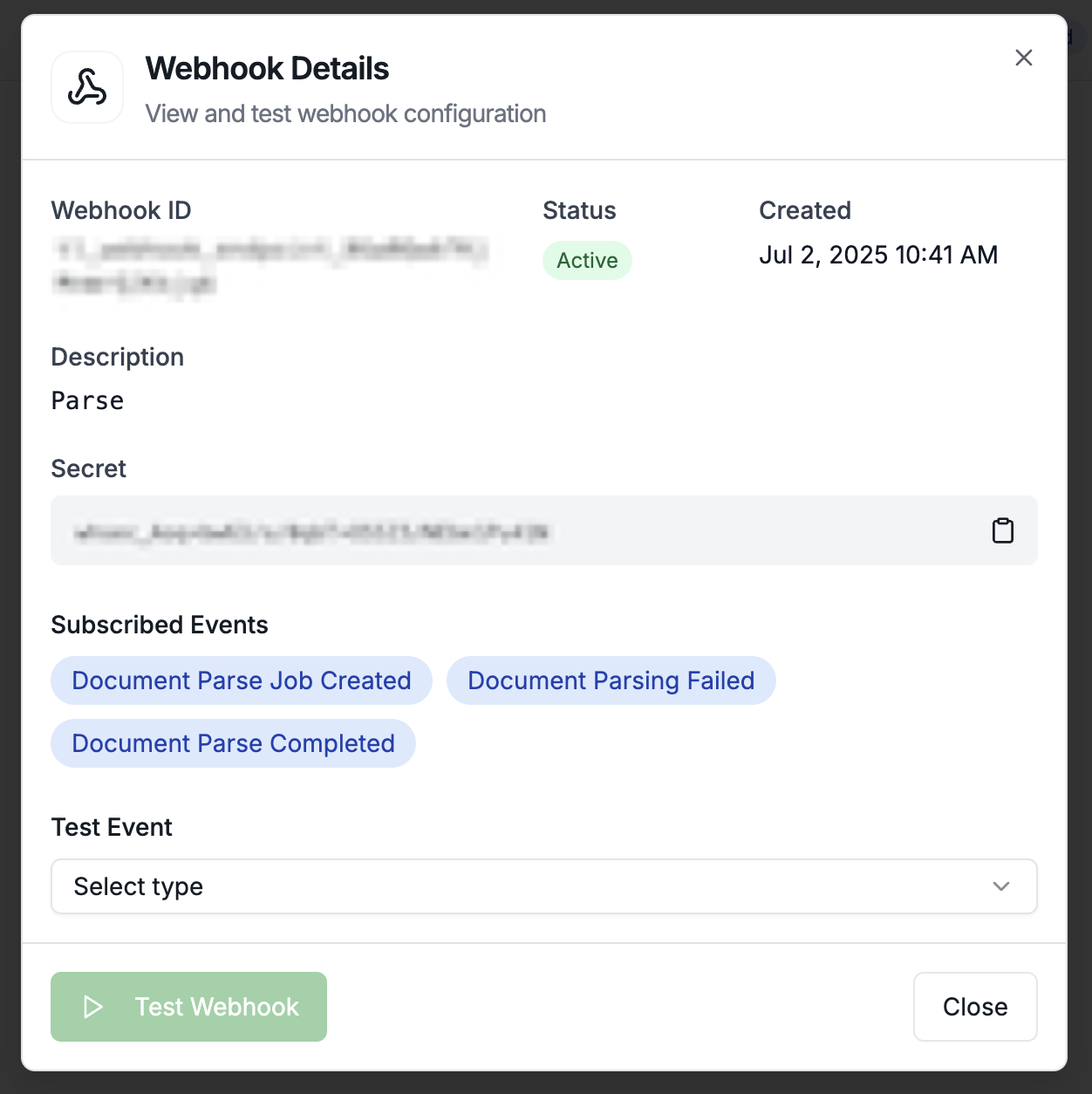
Secure your Endpoints with Signature Verification
To get your webhook secret:- Navigate to your project’s Webhooks tab in Tensorlake Cloud
- Click on your webhook to view its details
- Copy the webhook secret displayed in the interface
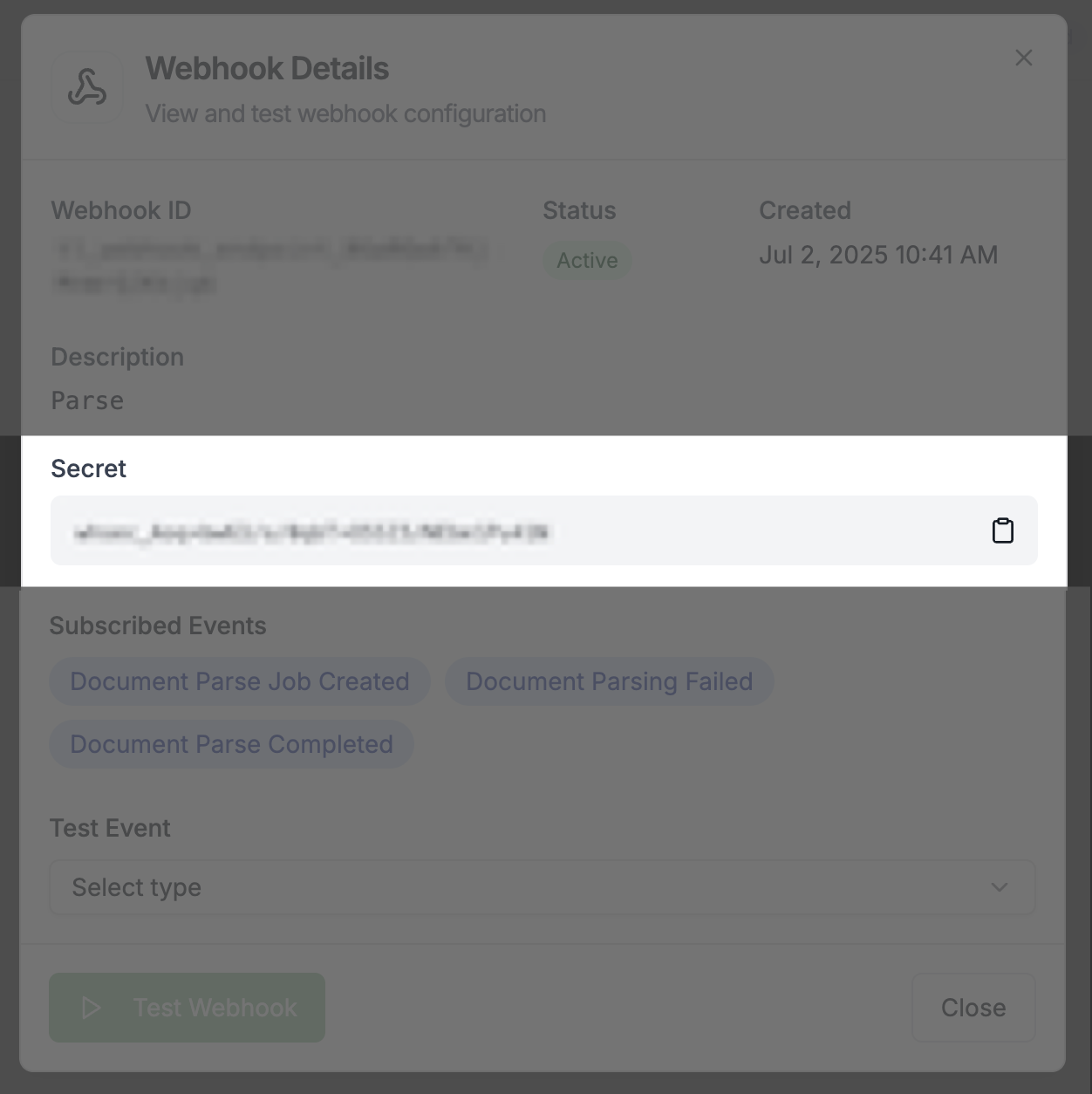
- Extracting the signature from the
svix-signatureheader - Computing the expected signature using your webhook secret
- Comparing the computed signature with the received signature